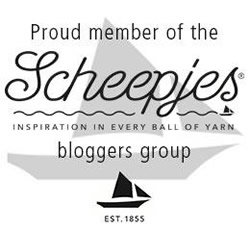Jaren geleden ging ik met mijn moeder naar het Anne Frank Huis in Amsterdam. We trotseerden de lange rijen en kwamen diep, diep onder de indruk weer naar buiten. Mijn moeder en ik, die elkaar altijd wel wat te vertellen hebben, konden niets meer zeggen. We zegen neer op een bankje, zuchtten een paar keer flink en slikten weg wat we niet konden zeggen. Zo voelde ik me in Zuid-Afrika toen ik Soweto en het Apartheidmuseum bezocht. De hele dag voelde ik de brok in mijn keel en kon geen woord uitbrengen. Het enige dat ik zeker wist is dat dít de plek was waar ik mijn hart verloor.
Years ago my mum and me visited the Anne Frank House in Amsterdam. We conquered the long lines and came back out deeply, deeply impressed. My mum and me, who always have something to say to each other, were lost for words. We just sat on a nearby park bench, let out deep sighs and swallowed what we couldn't say. That is exactly how I felt when visiting Soweto and Apartheidmuseum in South-Africa. I felt like this the whole day. I was stumped for words and the experiences of the day left me very emotoinal. I knew for sure I lost my heart.
Soweto is een enorme wijk van Johannesburg. Nou ja, met 5 miljoen inwoners mag het eigenlijk wel gewoon een stad heten. Officieel is het een township. Daarmee denk je misschien meteen aan golfplaten huisjes, maar dat beeld klopt niet helemaal. Ja zeker, die buurtjes met golfplaten huisjes zijn er zeker. Maar Soweto bestaat uit tientallen wijken: rijk, middenklasse en arm, soms gescheiden door een paar straten of zelfs maar een benzinestation. Dat maakt van Soweto een kleurrijke bende die absoluut ontdekt moet worden.
Soweto is a huge quarter of Johannesburg. Well, to be honest. With 5 milion inhabitants it could be a city in itsself. Soweto is called a 'township', now when you hear this you may think of poverty and people living in shacks. This is only partly true. Soweto exists of many neighbourhoods, some poor, some middle class and some even rich. The great thing is that all these neighbourhoods work together and can be devided by just a simple gasstation. This mix of neighbourhoods and classes makes Soweto so colourful and therefor definately with exploring.
Bovendien is Soweto het politieke geweten en bruisende hart van Zuid-Afrika. Hier woonden de bekende vrijheidsstrijders zoals Nelson Mandela, braken de bekende studentenrellen uit in 1976 en riep bisschop Desmond Tutu op tot vrede en vergeving. Je kunt een bezoek brengen aan het oude huis van Nelson Mandela, de beroemde Regina Mundi Kerk en het Hector Pietersen Museum. In dit laatste museum leer je meer over de studentenopstanden van 1976: honderden studenten protesteerden tegen het besluit dat scholen alleen nog maar les mochten geven in het Afrikaans. Ondanks dat het een vreedzaam protest was, schoot de politie met scherp en tientallen jonge mensen, waaronder de 13-jarige Hector Pietersen, verloren het leven.
Also, Soweto is the political conciense and beating heart of South-Africa. The freedom fighters, like Nelson Mandela, lived here, the famous student riots took place here and this is the place where Desmond Tuto pleated forgiveness and peace. You can visit the old house of Nelson Mandela, the famous Regina Mundi Church and the Hector Pieterson Museum. In the latter you'll learn more about the 1976 student riots. Back then thousands of school kids and uni students protested because the government decided schools were allowed to teach in Afrikaans only. It was a peaceful protest, but the police chased down the mobs using arms. Hundreds of young kids, amongst them the 13 year old Hector Pieterson, lost their lives.
Toen onze gids voorstelde om een wandeling te maken door shanti-town Kliptown haalde ik diep adem en zei ik: oké dan. Maar een beetje zenuwachtig (en bevooroordeeld!) was ik wel. Want die mensen hebben toch niets? En bij hun vergeleken loop ik daar toch rond als een wandelende bankrekening? We zouden het zien. Ik zat fout, en hoe! De kindjes die achter ons aanliepen vroegen niet om geld of snoepjes. Ze wilden ons wel graag een handje of knuffel geven of aan ons haar zitten. Buurtbewoners kwamen naar ons toe, stelden zich voor een praatten met ons over ons bezoek aan Zuid-Afrika, boden ons wat te eten of drinken aan en vroegen ons de oren van het hoofd. Of ik me veilig voelde? Jazeker.
Aan de ene kant voerde mijn hoofd een stil protest: ik vind het verschrikkelijk om te zien dat een gezin van 8 in een golfplaten hutje van 10 m² woont, zonder water en elektriciteit, en ben van mening dat élk mens wat beters verdient. Maar aan de andere kant: als deze mensen zouden verhuizen, zouden ze dan ook hun vrijgevigheid, nieuwsgierigheid en onbevangenheid kwijtraken? Wat is de prijs van rijkdom?
When our guide proposed to visit a shanti-town in Kliptown, I had to take a deep breath before I agreed. I was nervous and I have to admit: I was prejudiced too! Because, these people have nothing and compared to them I must look like a walking ATM, right? I was wrong, and not a little bit! The children that followed us around never asked for candy or money. They wanted to hug us or hold our hands, tough our hair. People from all around the neighbourhood, introduced themselves, offered us a drink or some food and asked us so many questions. Did I feel safe? Oh yes I did!
In my head I had a little conflict though, 'cause I honestly feel that people shouldn't live in shacks without basic things like running water and electricity, no family of 8 should live in a shack of 10 m². I feel that every person deserves something better than this. However, I wonder if these people would move on to something better, would they lose their generosity, curiosity and impartiality? What would the price they pay for getting richer?
Aan het einde van de dag bezochten we het Apartheid Museum en ik overdrijf niet als ik zeg dat ik hiervan zo veel malen meer onder de indruk was dan van het Anne Frank Huis (dus dat zegt wel wat). Een schitterende en uitgebreide expositie, over de opkomst, uitvoering en afschaffing van de Apartheid én een hele mooie expositie over het veelbewogen leven van Nelson Mandela. Je bent hier zo 3 uur zoet. Wat me bij bleef is de tekst vlakbij de ingang: 'Dit is waar Apartheid thuis hoort, in een museum'.
At the end of the day we visited the Apartheid Museum and I have to say that I was even more impressed by this than I was with the Anne Frank House, so that says something. A fantastic exhibit about the introduction, execution and abolition of Apartheid. And an amzing exhobit about the life of Nelson Mandela. What struck me most was the line near to the museum entrence. 'This is where Apartheid belongs: in a museum'.
Wil je meer weten? Bekijk dan alle informatie over Johannesburg en De kleuren van Soweto. (Je kunt onder mijn reisblog ook comments achterlaten als je dat leuk lijkt).
Wanna know more: read all my tips on Johannesburg and The Colours of Soweto (it's in Dutch, but Google Translate is your friend).
7 opmerkingen
Bedankt voor je bezoek aan mijn blog! Laat gerust een comment achter.
Lees ook de Privacy Voorwaarden.
Thank you for visiting my blog! Don't be shy and leave a comment.
Read my Privacy Policy.
Abonneren op:
Reacties posten (Atom)


















Mooie blog!
BeantwoordenVerwijderenOver Anne Frank gesproken: Vorige week is er een mooie documentaire uitgezonden over de altijd aanwezige rij bij het Anne Frank huis. Absoluut de moeite waard! http://www.uitzendinggemist.nl/afleveringen/1414875
Groetjes Maaike
You know, there's so much to say. But one needs a visit to Soweto or similar to really understand you own privileges. One must be an extremely hard person not to understand that our own little miseries are luxury to others. Living in South Africa keeps my feet firmly on the ground, because there are so many checks and balances. On the one side you see luxury and privilege, on the other - people who walk 8 km, carrying a jerry can with water to their home; I have three toilets in the house, others do their ablutions in the veld, in this year of 2014.
BeantwoordenVerwijderenI had the privilege of working in rural Limpopo for 5 years, and that really opened my eyes further. I saw women still going bare-breasted, because that's their tradition. I saw children running away from me, because they have not ever seen a white woman before, or screaming, because they thought I must be police (my white pick-up truck). I've been to villages with no electricity, no telephones, no running water - maybe a borehole with a hand-pump. I've experienced so much friendliness: being offered vetkoek, water, cooldrink, sitting on the mud-floors inside, people guiding me from one village to the next, a man calling me from the top of the hill (only place to get a signal) to wish me a happy Christmas, year after year - just because I once gave them advice on their community garden.
Once you have seen/experienced this, and really take it to heart, you can never look at your own life in the same way. Waiting a bit for the doctor is nothing - my gardeners wife hopes's she can see a doctor at the clinic after three days. I want to teach my kids to be mindful of what they have and experience, and share with others, and never be righteous in what they expect of life. The Apartheid Museum is on our list for the upcoming winter holidays - it is something they need to see.
I love reading about your experiences here!
I totally relate!
BeantwoordenVerwijderenOok op mij maakte het een gigantische indruk, Soweto en het Apertheidsmuseum. Ik vertel mijn (Zuid-Afrikaanse) kinderen regelmatig erover, en elke keer voel ik me weer zoals toen ik er rondliep...
thank you for sharing all this!!!!!
BeantwoordenVerwijderenxxxxxx Ale
Hi Esther, ek is bly jy het die geleentheid gehad om Suid Afrika te besoek en dat jy dit so baie geniet het! Lekker om jou perspektiewe te ervaar op jou blog. Ek dink Suiad Afrika is 'n uitstekende reis ervaring, maar soos enige plek is dit natuurlik baie anders om daar te woon. Ek wonder of jy 'n ekstra sak moes aanskaf vir nuwe purchases of was daar nie kans om van die mooi crafts te koop nie? Groete!
BeantwoordenVerwijderenOoh, helaas had ik veel te weinig tijd om te shoppen. Maar ik ben wel een paar geweldige shops tegengekomen (I love SAM in Cape Town, Handmade By Me, I love Yarn etc). Maar ik was vooral onder de indruk van de mensen, de verschillende landschappen en het heerlijke eten en de lekkere wijnen. De laatsten konden gewoon in mijn maag mee naar huis gelukkig ;-)
VerwijderenThis is such an insightful post. I've been reading Nelson Mandela's autobiography, and I imagine that visiting these places must be quite emotional. Soweto looks like such a colorful place, and yet there is so much poverty compared to what the rich there have. I also think Apartheid belongs in a museum, not out in the real world for people to endure.
BeantwoordenVerwijderen